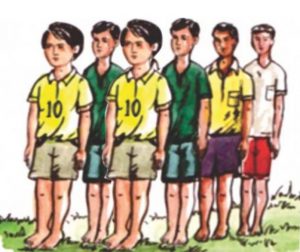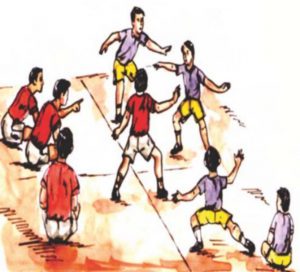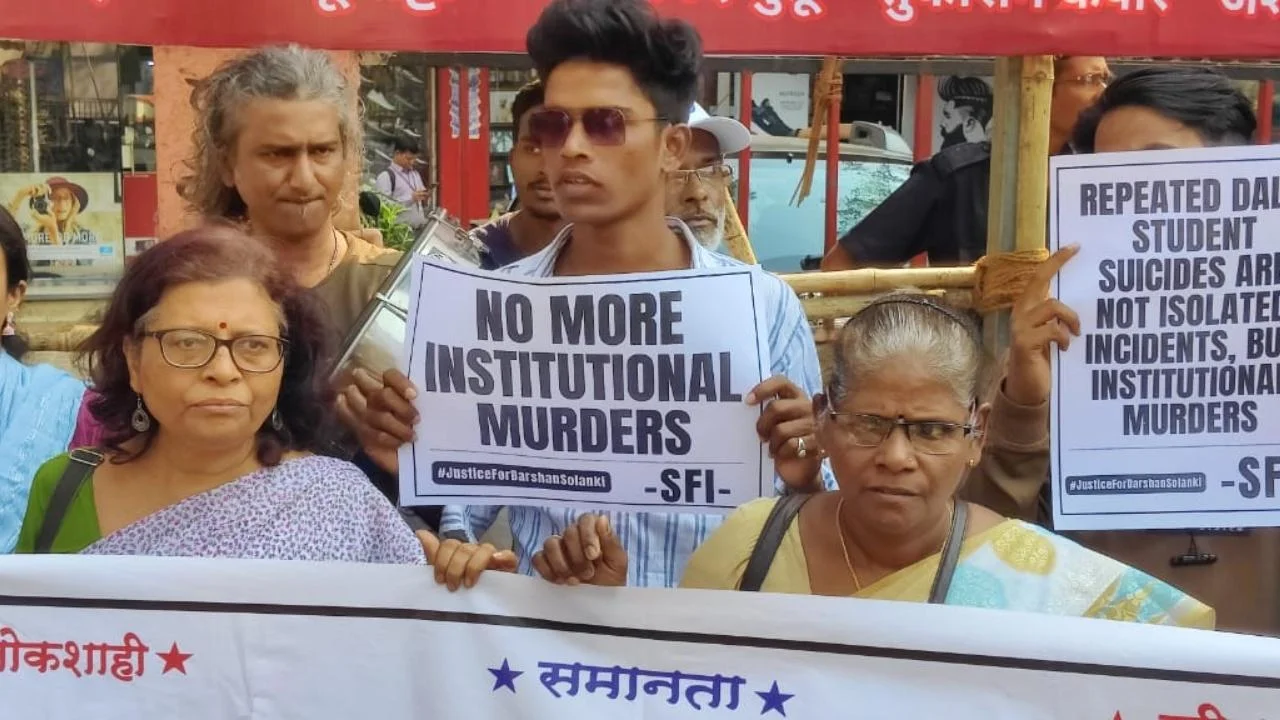One child, one teacher, one book and one pen can change the world.
Gender bias prevails in almost every sphere of our life. For instance we can take the example of teaching and nursing professions that are generally seen as a women’s professions. It has been perceived that students and patients can connect with them better. Such stereotypical notions cannot be eradicated from society immediately, but can be gradually weakened. To eliminate these changes it is essential to bring positive changes in curriculum. Publishers should take care to include sociologically and psychologically-sensitive content in textbooks. The curriculum should be gender and disability-sensitive and ecologically-conscious.

Image Source: Raj Teachers
But recently the deep rooted gender bias in our society has further been propagated by the revised school textbook in Rajasthan. Ample instances hinting male superiority have been found in English and Hindi textbooks. In the Hindi textbook of Class III, a chapter titled Games has three pictures showing only boys playing games indicating that games are only meant for boys. In most chapters women have been used only in reference to men, says a report prepared by group of academicians who has scanned revised textbooks.
the deep rooted gender bias in our society has further been propagated by the revised school textbook in Rajasthan.
“The pictorial representation showing games being played by boys at the level of class III sanctions that games are for males. The previous books chapters had decent representation of girls in all pictures and illustrations, if not equal,” said Devyani Bhardwaj, one of the academicians who scanned revised textbooks.
Similar incident took place in Bengaluru where a NCERT (National Council of Education Research and Training) textbook of class 5th containing a drawing depicting five men engaged in construction of house. Women, who are invariably present at construction sites carrying pans of bricks and cement, are conspicuous by their absence. The drawing is just an example of stereotyping and gender bias in India, especially in NCERT primary textbooks.

Image Source: Raj Teachers
In classrooms, teachers often breed an atmosphere which implies that boys, on an average, understand science, technology, engineering and mathematics (STEM) better, whereas girls perform better in reading, writing and handicraft. Such classroom discourses result in similar behaviour among kids – each student showing conformity to their respective gender roles.
Such textbooks not just promote gender bias but also promoted stereotypical images in society. In fact, a teacher might merely be clueless as to how to address discrimination and difference with regard to class, caste, socio-economic background, and so on. It should be mandatory for the teachers both in private and government schools to undergo teacher-training courses and programmes.
Also read: Misplaced Priorities: How Educational Institutions Perpetuate Campus Sexism
Similar pattern has been found when it comes to history books. From ancient period to modern Indian history, the role of prominent women is generally marginalized by these books. In fact, overall depiction of women is mainly in ‘caring roles’ or relational category – daughter, sister, wife and so on. Women are depicted in a limited manner-as professional athletes. The report suggests that certain terms like policeman/milkman must be changed to police person and milk person to make them gender sensitive. Similarly, ownership of assets should be jointly reflected, like a ‘man owning a canteen’ can be stated as ‘man/woman owning a canteen’.
Even after having so many policies, our education system has not changed due to multiple factors – a prominent one being that teachers are not professionally trained.
Why is it so that female characters are not used in description as businesswoman or police officer? In the textbooks, no image has been used to describe male character working in the house and the household works are already restricted to female characters in books. This is how school has become a major medium of internalising the gender roles and stereotypes directly and indirectly. It has been found that in stories, female characters are mostly described as working in traditional roles.
The National Curriculum Framework 2005 prioritises gender sensitive education as a means of attaining quality education. CBSE, acting under NCERT’s directives, has designed a kit on gender sensitivity. It includes a handbook, cards and a manual for teachers to equip them with required skills to practice gender sensitive learning. With such positive reforms our way, we have started the journey towards a gender sensitive culture, and we hope to see considerable transformation in the classroom.
Even after having so many policies, our education system has not changed due to multiple factors – a prominent one being that teachers are not professionally trained. The lack of trained teachers comes in the way of a gender sensitive classroom. Also, even if teachers are trained the most of the teaching programmes of the country lack gender studies. Teachers are not trained to do justice to gender sensitive textbooks. The curriculum has been updated, but the syllabus of Bachelor of Education remains the same. Teachers need to understand the importance of providing a friendly and non-threatening learning environment for all learners to thrive.
The curriculum works like a compass to provide direction to the students. But if the curriculum is not gender sensitive, it is only makes it harder for upcoming generations to change their mindsets and rectify the system, as they would require a lot of unlearning.
Image source: Times of India
About the author(s)
Areeba Sundus is a History student from Jamia Millia Islamia with her specialisation in Modern Indian History. Feminism is a crucial part of her identity and she wants to become a voice of the voiceless.





nice self-inspirational-quotes